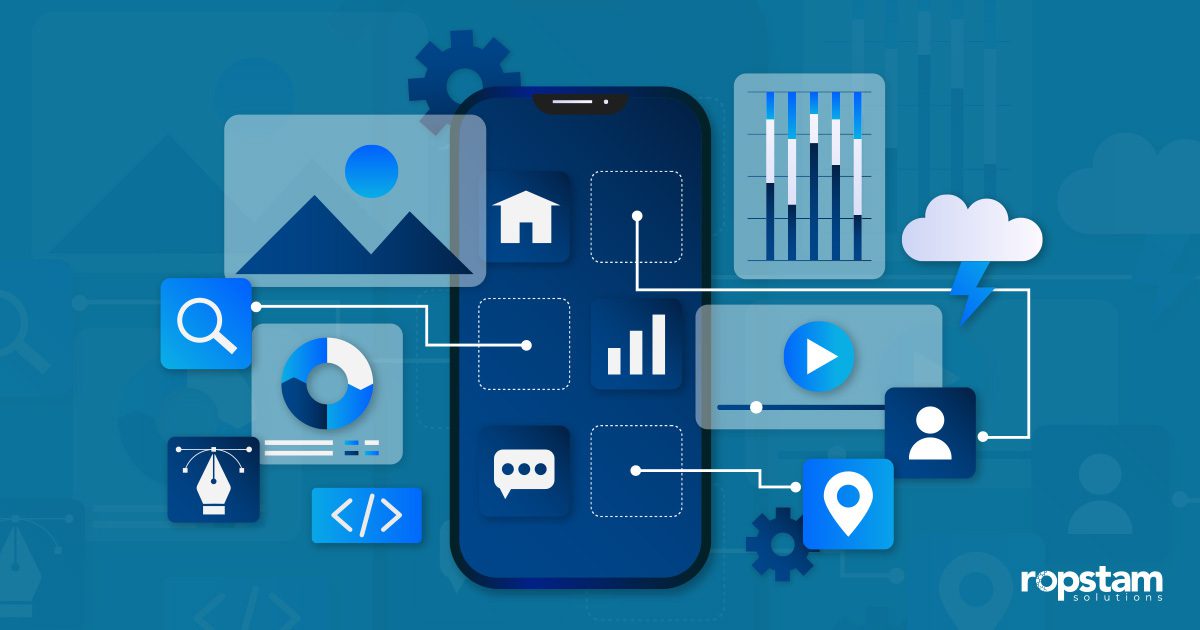Because smart developers know when to let Laravel do the heavy lifting.
1. Working Smarter, Not Harder
In the world of software development, there’s a common saying: “Don’t repeat yourself.” Every time you write the same code twice or manually repeat a task, you’re missing an opportunity to automate.
Automation doesn’t mean removing humans from the process, it means freeing up humans to focus on higher value work. And Laravel, as one of the most popular PHP frameworks, is packed with built-in features to help you do just that.
Whether you’re maintaining a small internal dashboard or building a large scale SaaS product, automation in Laravel can save you hours (or even days) over the life of a project. It can make your workflow more predictable, reduce bugs, and improve your application’s performance.
In this guide, we’ll explore Laravel’s automation capabilities, break down when and how to use them, and walk through real-world examples that can make your projects smoother, faster, and more reliable.
2. Why Automation is a Game Changer for Developers
Automation in software development comes down to three main benefits:
a. Consistency
Humans can forget steps or make small errors machines don’t. When you automate, you ensure that every task runs the same way, every single time. That means fewer surprises and more predictable outcomes.
b. Time Savings
Every repetitive task you automate is time you win back. Whether that’s five seconds or five minutes, these small savings add up significantly over weeks, months, and years.
c. Fewer Mistakes
Manual processes are vulnerable to oversight. Automation reduces that risk by ensuring your defined processes run exactly as intended.
Pro Tip: The earlier you think about automation in your Laravel project, the better. Building with automation in mind from the start will save you time refactoring later.
3. Laravel Tools That Do the Heavy Lifting for You
Laravel’s automation friendly ecosystem offers several tools out of the box. Let’s break them down with expanded details and examples.
3.1 Artisan Commands, Your Development Assistant
Artisan is Laravel’s command-line interface (CLI), and it’s a developer’s best friend when it comes to automating repetitive tasks.
Why it’s useful:
Artisan can instantly create controllers, models, migrations, tests, and even custom scripts. Instead of manually creating and wiring up files, Artisan does the groundwork for you.
Common Built-In Commands:
php artisan make:model Product -mcr
This one-liner creates:
- A model named Product
- A migration file (-m)
- A controller (-c)
- A resource controller (-r) with pre-filled methods
Custom Commands for Automation:
Let’s say you need to import CSV data into your database every Monday. You can create a custom command:
php artisan make:command ImportWeeklyData
Then, you define the logic inside that command. Combined with Laravel’s scheduler, it runs automatically.
3.2 Task Scheduling, Automating Recurring Work
Laravel’s task scheduler is a clean alternative to system cron jobs. Instead of editing crontab files directly, you can define your schedule in Laravel’s app/Console/Kernel.php.
Example: Sending Weekly Reports:
protected function schedule(Schedule $schedule)
{$schedule->command(‘reports:send’)->weeklyOn(1, ’08:00′);}
This runs the reports:send command every Monday at 8 AM without you ever having to remember it.
Other Useful Scheduling Ideas:
- Daily database backups
- Log cleanup tasks
- Auto-expiring outdated offers or promotions
3.3 Queues & Jobs Keeping Your App Fast
Queues allow you to process time-consuming tasks in the background. This keeps your app responsive while still completing the necessary work.
When to Use Queues:
-
- Sending bulk emails
- Processing uploaded images or videos
- Generating large PDF reports
- Syncing data with external APIs
3.4 Events & Listeners Triggering Actions Automatically
Events in Laravel help you separate what happens from when it happens. Instead of mixing multiple actions into one method, you can fire an event and let listeners handle the rest.
Example:
After a user registers, you can:
- Send a welcome email
- Update a CRM system
- Notify a Slack channel
All without adding these steps directly to your registration controller.
3.5 Laravel Telescope & Debugbar Automated Monitoring
Automation isn’t just about doing things automatically it’s also about knowing when something goes wrong without manually digging through logs.
- Telescope: A Laravel debugging assistant that tracks requests, queries, exceptions, and more.
- Laravel Debugbar: A toolbar for monitoring performance right in your browser during development.
Both can alert you to issues early, helping you keep your app healthy.
4. Real World Use Cases for Laravel Automation
Laravel’s automation tools aren’t just theoretical, they can make an immediate, tangible difference in real projects. The beauty of Laravel is that its automation features apply to virtually any type of application, from e-commerce platforms to internal business tools.
For example, in e-commerce applications, automation can handle everything from generating invoices the moment an order is confirmed to sending tracking details to customers without anyone on your team lifting a finger. Inventory updates can be fully automated so that when stock levels drop below a certain threshold, the system notifies your team or even places a restock order with suppliers.
In content management systems (CMS), scheduled publishing means your marketing team can upload and schedule articles, blog posts, or promotional banners well in advance. Once the date arrives, Laravel automatically makes them live, keeping campaigns consistent without someone having to log in at odd hours. Similarly, you can set up automatic archiving for outdated content so your site stays clean and relevant.
For SaaS applications, automation might involve sending timely notifications like trial expiration reminders, onboarding emails for new users, or monthly usage summaries. These communications keep users engaged and informed while reducing the workload on your support or sales team. You could even have automated billing reports generated at the start of every month, ensuring finance teams have exactly what they need without chasing anyone for updates.
Even internal business tools benefit from Laravel automation. Employee attendance summaries can be generated at the end of each week, performance reports can be emailed to department heads every Monday, and data backups can be scheduled to run during off-peak hours so they don’t disrupt daily operations.
The key is to look at the repetitive actions in your organization, the ones that happen daily, weekly, or monthly and ask, “Could Laravel do this for us?” In many cases, the answer will be yes, and once automated, these processes quietly run in the background, saving countless hours and improving overall efficiency.
5. Best Practices for Effective Automation
Automation can be a game-changer, but it’s a tool that should be used thoughtfully. Without careful planning, you could end up automating inefficient processes, amplifying mistakes, or creating “black box” systems that are hard to debug.
The first step is to fully understand the process before you automate it. If you don’t know every step involved, you risk setting up an automated workflow that doesn’t handle edge cases, breaks silently, or causes unexpected results. For example, if you automate invoice generation but forget to handle cases where payment fails, you might send incorrect invoices to customers.
Secondly, logging and monitoring are essential. Every automated process should leave behind a clear record of what happened, when it happened, and whether it succeeded. Laravel makes this easier with built-in logging via Log::info() or third-party monitoring tools. This way, if something fails, you have a paper trail to follow, and you won’t be stuck wondering “Did that task actually run last night?”
Next, fail-safes should be built in wherever possible. These are safety nets that prevent an automation from running under the wrong conditions or from causing too much damage if something goes wrong. Imagine a job that sends out emails a fail-safe could ensure it stops after 50 attempts if something unusual happens, rather than spamming thousands of users by mistake.
Lastly, always test before deploying to production. It’s tempting to skip this step when an automation seems simple, but even small changes can have ripple effects. Run automated tasks in a staging environment to simulate real-world conditions. This prevents surprises like triggering the wrong workflow or overwriting data unintentionally.
When done right, automation in Laravel doesn’t just save time, it creates a development environment that’s faster, more reliable, and far less stressful.
6. Getting Started with Automation in Laravel
If you’re new to automation in Laravel, the good news is that you don’t need to overhaul your entire project at once. Start small and build up over time.
Begin by identifying repetitive tasks in your current workflow. This could be something as simple as sending weekly reports, generating invoices, or clearing old cache files. Once you have a list, rank them by how much time they take and how often they need to be done. The most frequent and time-consuming tasks are the best candidates for automation.
Next, explore Laravel’s built-in features to see if your task can be automated without external tools. For example:
- If it’s a recurring task, the Scheduler can run it automatically.
- If it’s a task triggered by a specific action, Events & Listeners might be perfect.
- If it’s resource-heavy, consider using Queues so it doesn’t slow down the app.
Then, start small and automate just one process. Monitor it for a few days or weeks to ensure it’s running smoothly. This trial period will help you refine your approach, identify potential pitfalls, and build confidence before tackling more complex automations.
Once you’re comfortable, expand your automation step-by-step. The key is incremental improvement every small automation frees up time for you and your team, and those minutes quickly add up to hours. Over time, you’ll find that many of the manual tasks you used to do have been replaced with reliable, automated workflows that run in the background without you lifting a finger.
The best part? As you get familiar with Laravel’s automation tools, you’ll start to see automation opportunities everywhere and that’s when the real productivity boost kicks in.
Conclusion: Let Laravel Work for You
Laravel’s automation capabilities aren’t just convenient add-ons; they’re fundamental tools for building smarter, faster, and more resilient applications. By embracing automation, you’re not simply “saving time”; you’re actively improving the consistency, reliability, and maintainability of your entire project.
Think about it: every time you automate a task, you’re not just avoiding repetitive work, you’re creating a process that runs perfectly every single time, regardless of who’s on the development team or what else is going on in the project. That level of consistency is invaluable for both small teams and large organizations.
Automation also changes the way you approach problem-solving. Instead of constantly putting out fires or manually fixing recurring issues, you can focus on building features that drive value for your users. You can experiment with new ideas, improve performance, and deliver updates faster because the foundational, repetitive tasks are handled in the background.
Most importantly, automation gives you scalability. As your project grows, so does the workload. Without automation, that growth often comes with an equally large increase in manual work which leads to burnout, errors, and delays. With automation in Laravel, you can handle more users, more data, and more complexity without proportionally increasing your workload.
The bottom line is simple: Laravel already gives you the tools you need to make automation part of your development workflow. The sooner you start using them, the sooner you’ll see the benefits. So take a moment to look at your current project, identify just one task you can automate, and set it up. From there, the possibilities are endless and your future self will thank you.













